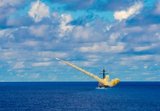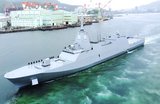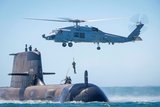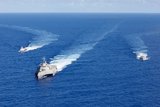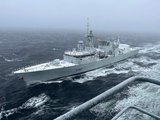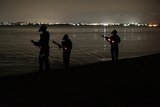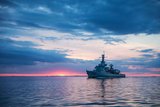US Navy wants superconducting degaussing system
American Superconductor Corporation (AMSC) has received a $14.94 million contract from the US Naval Surface Warfare Center to supply equipment and services for a high temperature superconducting (HTS) degaussing system.
The HTS system will be installed on USN and USMC Landing Platform Dock vessels.
AMSC will make, test and deliver a shipset of components/materials; analyse configuration-based engineering change proposals; and provide vendor representative support during installation.
HTS degaussing system components and materials include a control unit, power modules, junction boxes, cryo-coolers, accumulation tanks, HTS degaussing cable assemblies and cold gas lines.
Work is scheduled for completion by September 2023.
Superconducting technology has the potential to reduce the size, weight, and cost of equipment such as degaussing systems, propulsion motors, and power electronics.
HTS cables offer major advantages over the conventional copper cables used to reduce the magnetic signatures of USN ships. A degaussing system utilising HTS cables would be smaller, lighter, and cost less to install than other systems.
As part of our promise to deliver comprehensive coverage to our Defence Insight and Premium News subscribers, our curated defence news content provides the latest industry updates, contract awards and programme milestones.
More from Naval Warfare
-
![Maritime defence in the Mediterranean faces challenges from vulnerable land power]()
Maritime defence in the Mediterranean faces challenges from vulnerable land power
As an indispensable energy crossroads, the Mediterranean is at serious risk from grey zone disruption. As navies increasingly employ AI data centres, what happens when cutting-edge defence technologies rely on the very infrastructure most susceptible to hybrid tactics?
-
![US Navy to conduct an experimentation campaign with emerging tech in 2026 and 2027]()
US Navy to conduct an experimentation campaign with emerging tech in 2026 and 2027
The Technology Operational Experimentation Events will inform future requirements as the US Navy looks for innovative solutions across three key operational domains.
-
![Future Canadian Continental Defence Corvette will provide “Halifax-equivalent capabilities”]()
Future Canadian Continental Defence Corvette will provide “Halifax-equivalent capabilities”
Although the CDC project is still in its early stages, the Canadian Department of National Defence already has some requirements for the future platforms.
-
![US Navy to acquire micro-uncrewed underwater vehicles for ISR and coastal data collection]()
US Navy to acquire micro-uncrewed underwater vehicles for ISR and coastal data collection
The Naval Supply Systems Command is seeking authorised resellers of JaiaBot uncrewed underwater vehicles and multivehicle pods. The platforms will support undergraduate education at the US Naval Academy.
-
![NATO tests use of “undetectable, jam-proof” laser communication in maritime scenarios]()
NATO tests use of “undetectable, jam-proof” laser communication in maritime scenarios
As part of its effort to better prepare its capabilities for operations in contested and congested scenarios, NATO evaluated a Lithuanian ship-to-ship terminal designed to not be susceptible to enemy interference.







